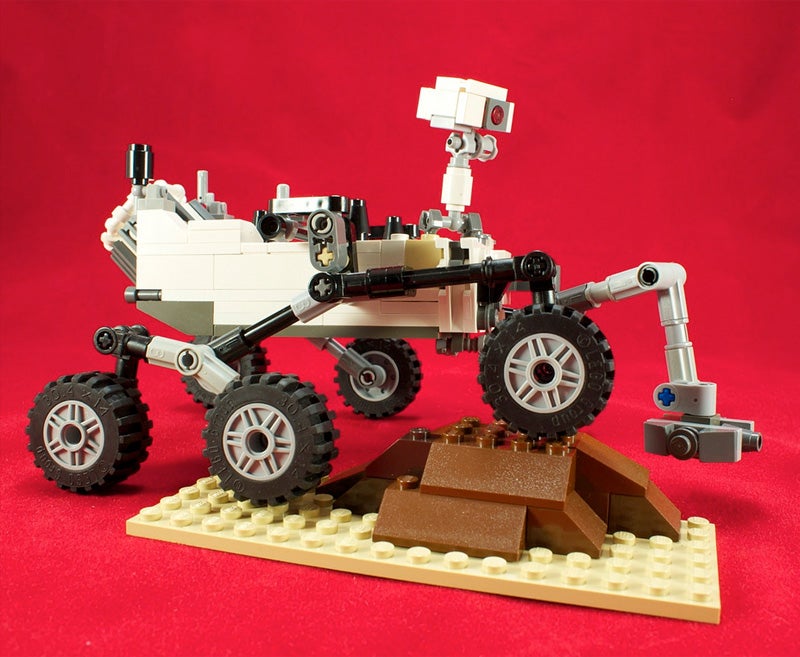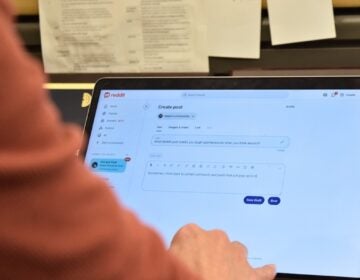Last minute gift for space geeks
ListenLEGO Curiosity Rover model (295 pieces) goes on sale on Jan. 1. Designed by a mechanical engineer who actually worked on the rover! Chinese Change’e3 doing fine on the moon- Partially shut down right now to protect from fierce mid-lunar day daylight heat on the moon. Will start up again later this week. ESA’s GAIA Spacecraft begins 5 year mission to map the positions of over a billion stars on this side of the Milky Way, as well as thousands of new exoplanets, asteroids and other currently unseen objects.
December 23, 2013
[Dave Heller] Still struggling over what to get that special someone for the holidays? Well for those who are curious about Curiosity, you can’t do better than heed the advice of Derrick Pitts, chief astronomer at the Franklin Institute. And Derrick, I challenge you to give 295 reasons to act on your suggestion.
[Derrick Pitts] Ah, well I have a really great set for that. LEGO has produced a new model toy which is actually a model of the Curiosity rover on Mars.
What can and can’t it do?
Well it can climb Mount Sofa or it might be able to go down into the den and television at your place. It won’t make it to Mars because there’s one already on Mars. But this is a model created by LEGO based on a suggestion by an engineer that actually worked on the Curiosity rover when it was being developed and built at Jet Propulsion Labs in California, back in 2011. He thought it was such a great piece for teaching that he suggested back in 2011 to LEGO that they actually build this model.
-

LEGO Curiosity. Photo by Flickr user Jason
So I’m curious: What is the real Curiosity doing right now?
Well the real Curiosity is having a fantastic time zipping around — loose term to use there for this rover on Mars — is working its way through Gale Crater as it works its way up to Mount Sharp. Trying to figure out whether or not the environments, what look like watery environments at this location, were conducive to the development of life. And a very interesting discovery was that just last week the rover determined that the region where it was sitting at that time was actually a vast, ancient lake that had existed for quite some time on the surface, probably millions of years, and had developed enough organic materials that the signatures of those organics from that fresh water lake were still around.
Very enticing. Let’s go from Mars to the moon where another rover is at work.
And this is the Chinese rover that landed on the moon just last week. The rover itself called YuTu is actually now down and out onto the surface of the moon. It has started doing some investigations, observations and research. But at the moment it’s actually sitting “sleeping” because if we think about the timeframe which this rover is working on the moon, it’s actually mid-day during the two-week day of the moon. So at mid-day, sunlight is really, really hot on the surface. So it can be up to about 250 degrees, and to spare the rover some stress working under these conditions the engineers and operators have put it asleep. So it can wait until, say, late afternoon when the temperatures are lower and it will be more effective working on the surface.
When NASA sent astronauts to the moon, and they were walking on the surface, were they also subjected to 250-degree temperatures?
Absolutely. When astronauts were there, they worked under the same conditions although slightly different in that what they did is they worked in the late afternoon or in the early morning rather than at high noon when it was very, very hot. But still even later in the day on the moon, if you will, later in that two-week period or earlier in that two-week period, the temperatures are still fairly high. Now when we talk about temperature on the moon, it’s very different than what we’re thinking about for Earth. Because here on Earth when we talk about temperature, mostly we’re talking about — almost exclusively — we’re talking about air temperature. And air acts as the medium that carries the heat that’s generated by solar radiation coming down to the planet, heating the surface, heating the oceans, which in turn heat the air and then we feel that warmth. On the moon there is no air, so there is no medium to carry heat. However, the radiation that’s absorbed by objects on the surface from the sun does generate a thermal response that we would measure as temperature.
Water would boil?
Absolutely, especially since there’s no atmosphere so there would be a very low air pressure anyway, so boiling would happen a lot quicker. On the backside though, away from the sun, it’s incredibly cold, down to 100 degrees below zero or more. So this is the difference between being in the sun’s radiation field or out of the sun’s radiation field.
-

Photo by Flickr user jk-digital
Back to China. To what extent are they conducting this endeavor for bragging rights and to what extent are they doing it to expand on the science that we already know about the moon and its surface?
I don’t think there’s any question that what China is doing is that they are building up their experience to become a regular presence in space exploration, both within low Earth orbit, or in the Earth environment, or out to the moon or perhaps even beyond. So we know that they’ve said that they’ve planned to build a new space station that will be on orbit in 2020. We also know that they’ve said that they want to send people to the moon sometime after that. So I think that this step that we see now is indicative of their planned forward movement to accomplish these other goals.
We touched on NASA, China; the European Space Agency also has a project aloft.
You know, there’s a lot of space activity going on these days even though we may think that there isn’t a lot happening. European Space Agency last week launched their latest galactic survey tool in which they plan to measure positions, brightness, energy output and motion of one billion stars in our galaxy.
Is this tool a telescope like Hubble?
It is like Hubble with slight differences. Improvements of course have come over time, and of course specifically designed to do this sort of work of astrometrics and measuring positions and all these other kinds of pieces of information and it’ll be very valuable. Not only will this spacecraft named Gaia be able to gather so much information about these one billion stars, but Gaia will also be able to identify potentially thousands of exoplanets, asteroids and other objects that may be about there in this region of space that we have not discovered yet.
“Not only will this spacecraft named Gaia be able to gather so much information about these one billion stars, but Gaia will also be able to identify potentially thousands of exoplanets, asteroids and other objects that may be about there in this region of space that we have not discovered yet.”
Derrick Pitts
-

Gaia spacecraft. Photo credit: Wikipedia
You mention exoplanets and those always create exciting headlines. Is major astronomy work also being done regarding discoveries about stars, or is most of the work now around planets and exoplanets?
I think one of the most exciting things about astronomy is that there are so many advancing fronts of research. It’s black holes, it’s the evolution of galaxies, it’s the presence of stars, it is new planets being discovered; all of these different things are all advancing fronts that go on all the time. So while we hear more about exoplanets perhaps than any other thing except asteroids, when we actually dig into it we find out that there are advances taking place all across these different research fronts of astronomy. Exoplanets of course stand out because of the possibility that there could be a chance of finding life. Asteroids stand out because we worry about whether there’s one large enough lurking out there to smack us at some time in the future and cause great destruction here. We are also very much interested in determining whether or not dark matter or dark energy are real and what effect they have on the fate of the universe, because we’re always jazzed about what the fate of the universe is going to be. So when we look deeper, we find that there’s so much going on in all of these different realms of astronomy. It makes astronomy exciting every day of the year.
And it’ll make for an exciting 2014. Thanks, Derrick.
WHYY is your source for fact-based, in-depth journalism and information. As a nonprofit organization, we rely on financial support from readers like you. Please give today.




